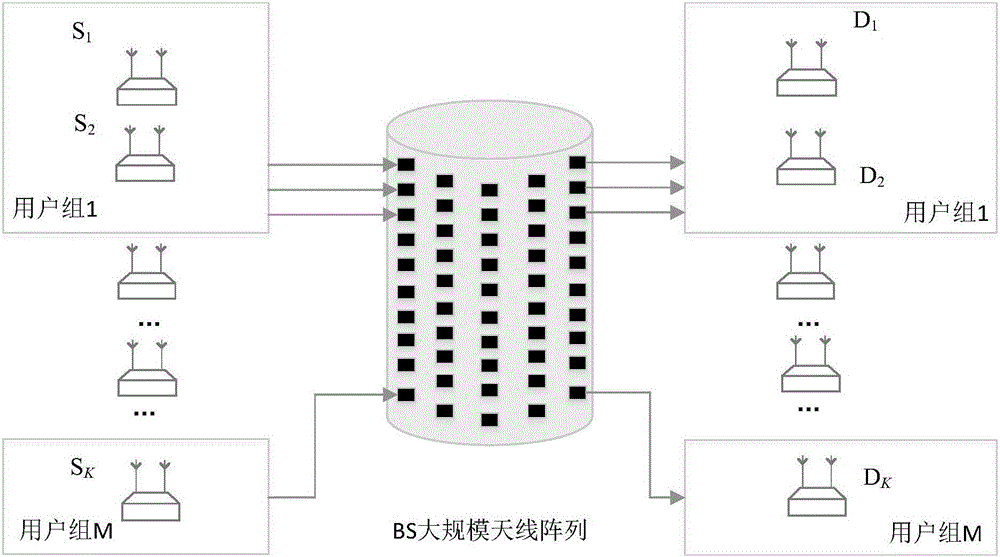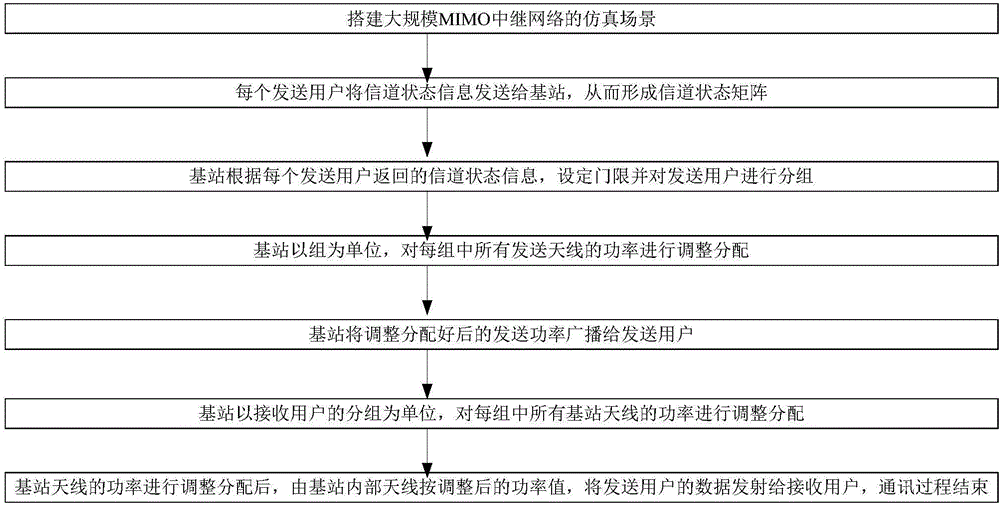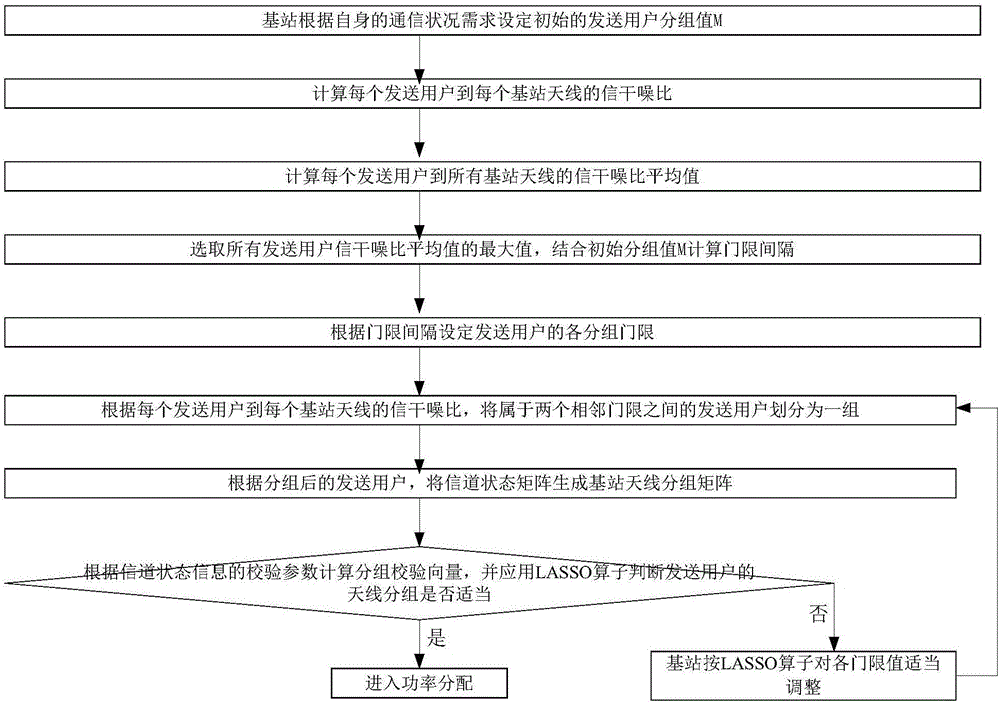Antenna and power joint allocation algorithm based on group match
A technology of joint allocation and base station antennas, applied in power management, wireless communication, electrical components, etc., can solve the problems of sacrificing system throughput performance, poor QoS guarantee and channel adaptability, and high algorithm complexity
- Summary
- Abstract
- Description
- Claims
- Application Information
AI Technical Summary
Problems solved by technology
Method used
Image
Examples
Embodiment
[0155] A Joint Power and Antenna Allocation algorithm (JAPA) based on group matching and LASSO operator. The simulation scene is set as the common simulation network configuration of massive MIMO network. A base station is arranged in the center of the cell, and users who need to rely on the base station for relay communication are randomly distributed within a radius circle of 500 meters around it. Assuming that orthogonal channels are used for resource allocation between users, there is no interference between different users, and large-scale fading channels are considered. The detailed simulation parameters are shown in Table 1:
[0156] Table 1
[0157] parameter
value
bandwidth
10MHz
noise power
-124dBm / Hz
Base station transmit power upper limit
1μW / Hz
Sending user transmission power upper limit
1mW / Hz
[0158] The communication modeling of the present invention includes two parts: from the sending user S k ...
PUM
 Login to View More
Login to View More Abstract
Description
Claims
Application Information
 Login to View More
Login to View More - R&D
- Intellectual Property
- Life Sciences
- Materials
- Tech Scout
- Unparalleled Data Quality
- Higher Quality Content
- 60% Fewer Hallucinations
Browse by: Latest US Patents, China's latest patents, Technical Efficacy Thesaurus, Application Domain, Technology Topic, Popular Technical Reports.
© 2025 PatSnap. All rights reserved.Legal|Privacy policy|Modern Slavery Act Transparency Statement|Sitemap|About US| Contact US: help@patsnap.com



